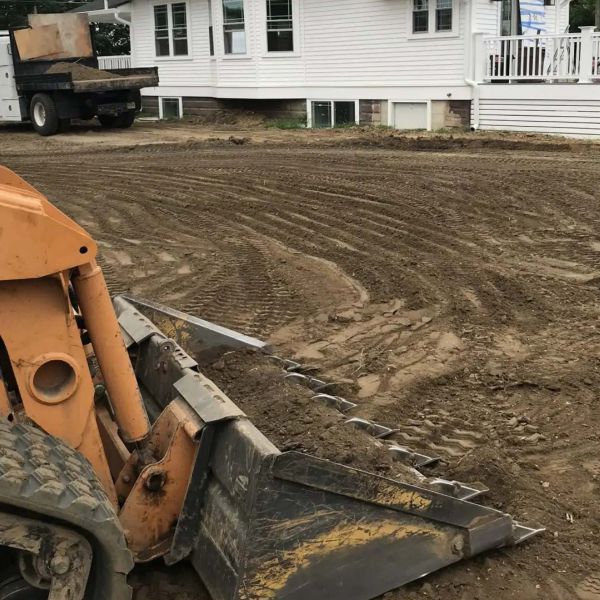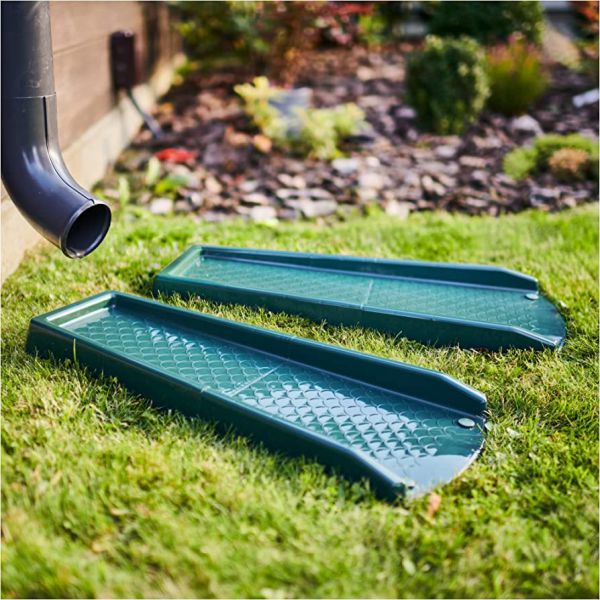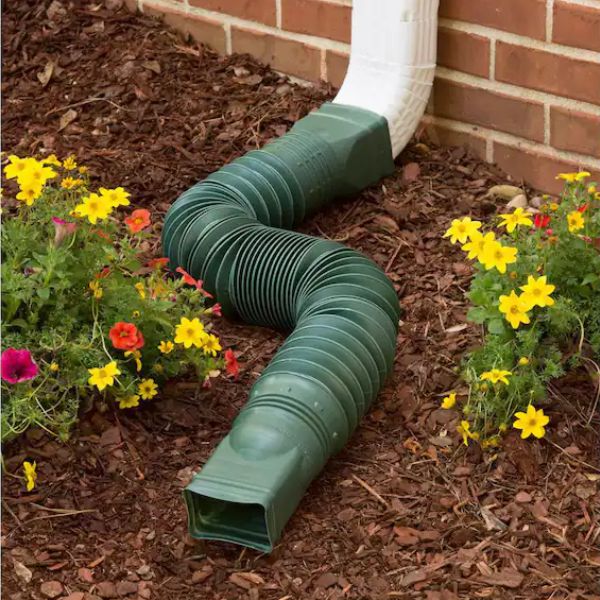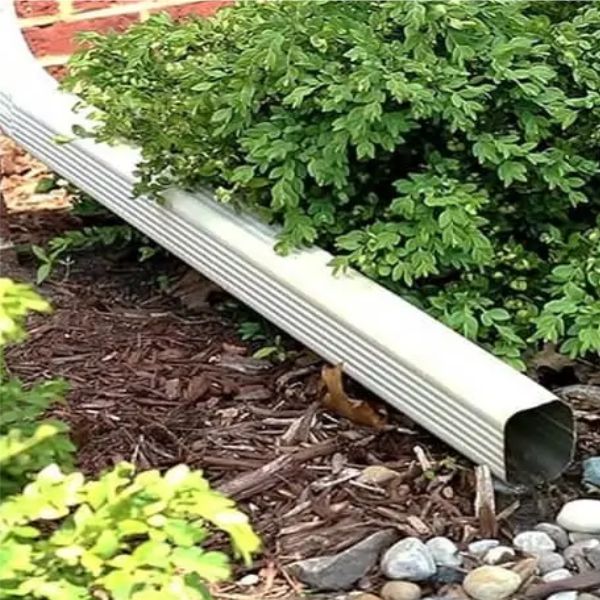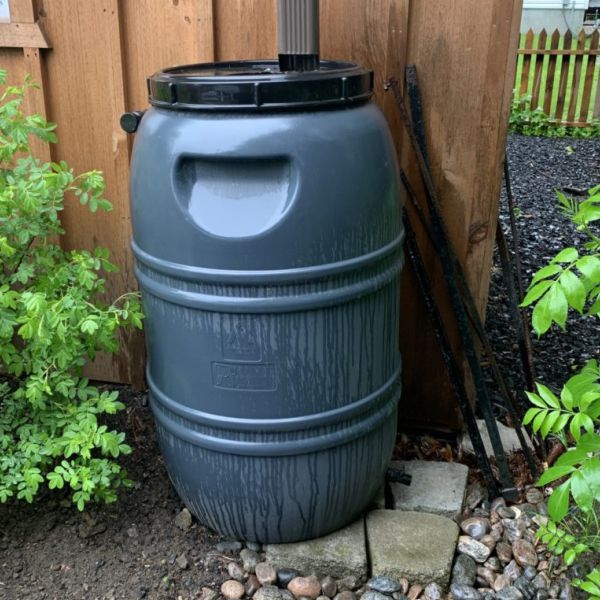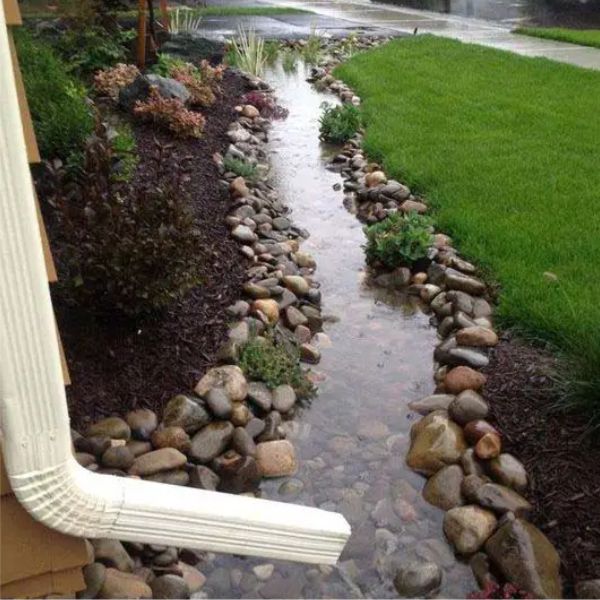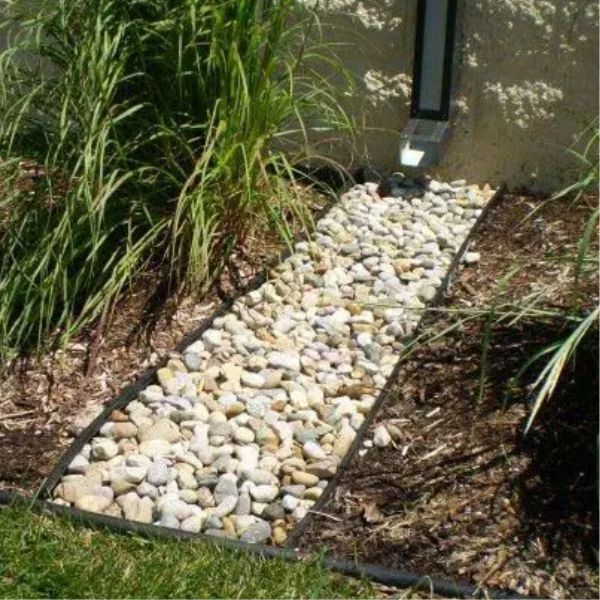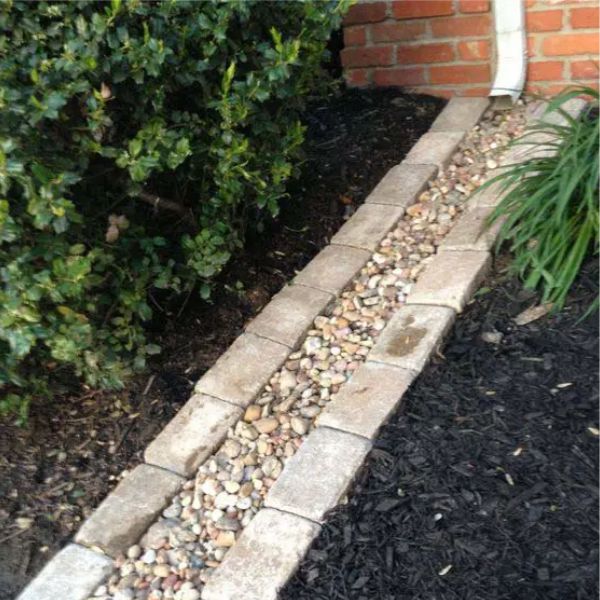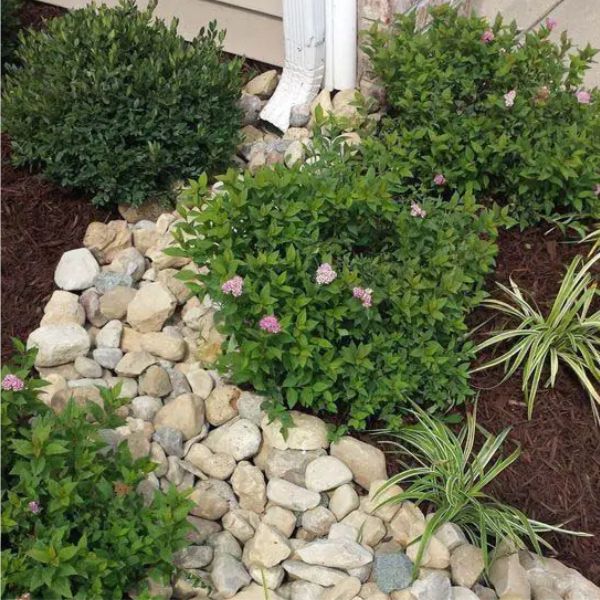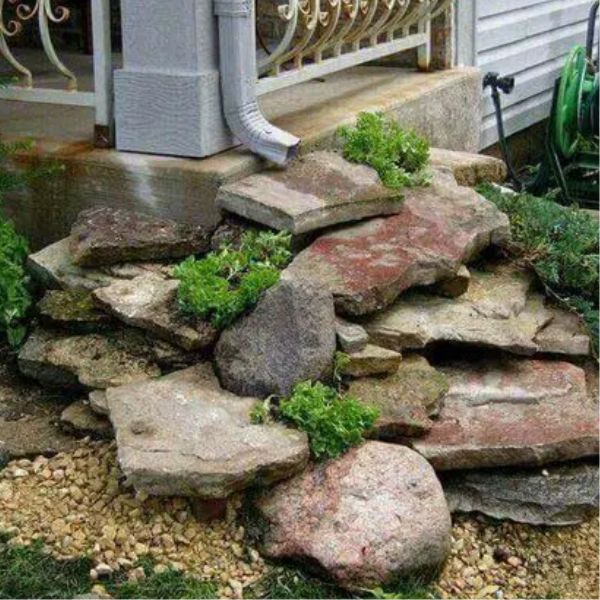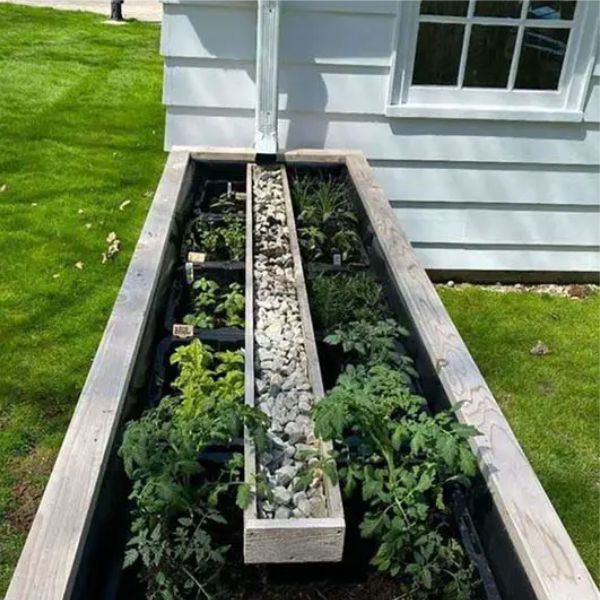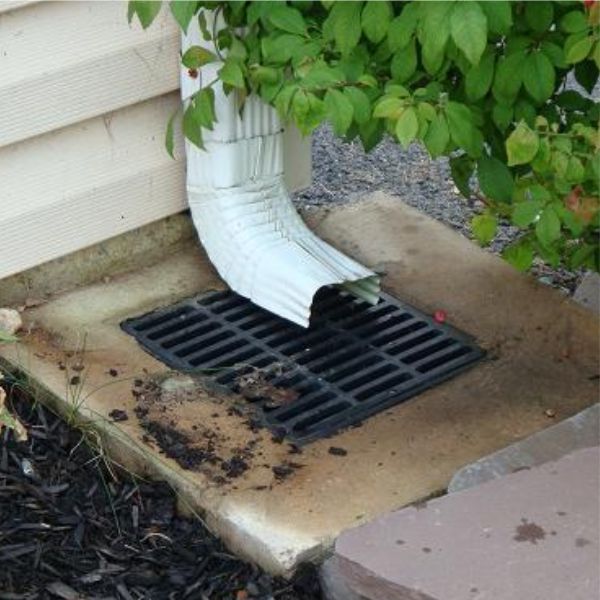Prevent Water in Your Basement
Eliminate Musty SmellsManaging rain and snow in your yard
Keeping water away from your foundation
Proper drainage around your home

ASK AN EXPERT
If you still have questions about any of our services, please feel free to ASK AN EXPERT or review our FAQ section.
Slope Your Yard
Gravity is your FriendSlope your Yard for Proper Drainage
Running or moving water always finds the path of least resistance. Whether it slopes away from your home’s foundation or towards it.
In Regina, we always get rain and snow. This precipitation is great for gardens and lawns but terrible for your basement. Excess water can find its way into your home through the smallest cracks in your foundation.
There are a lot of things that can be done to help manage the water around your home. One of the best is to slope the ground away from your home. Towards the alley and street or driveway.
Extending Downspouts
Move water away from your foundationExtend the Downspouts coming from the Gutters
The Gutters or Eavestrough around your roof catches the water rolling off. The downspouts will funnel that down to the ground. Which could be part of the problem.
If the downspout ends right near the foundation, then that water is now too close. Those downspouts should be extended to help move the water further from the foundation.
There are many ways to do this. Both with products and with landscaping.
A simple Downspout Splash Pad/Block with help water move 2 feet further away from the foundation.
They come in plastic or stone and can be secured to the ground with a tent or landscape spike. Keeping it in place even during the worst weather.
ALLIED LUMBER | HOME HARDWARE
227 Dewdney Avenue, Regina
A simple Downspout Splash Pad/Block with help water move 2 feet further away from the foundation.
They come in plastic or stone and can be secured to the ground with a tent or landscape spike. Keeping it in place even during the worst weather.
ALLIED LUMBER | HOME HARDWARE
227 Dewdney Avenue, Regina
Downspout Extension. If your home is newer or you have had new eavestrough added, chances are the eavestrough company made an extension for you.
If not, you can purchase one in aluminum or vinyl. There are a number of eavestrough companies that will also come to you and make and install custom downspout extensions.
ALLIED LUMBER | HOME HARDWARE
227 Dewdney Avenue, Regina
Extend your downspouts into a Rain Barrel or series of rain barrels.
Rain barrels collect water from your gutters into a large tank, which you can use to water flowerbeds and vegetable cards or even wash your car.
It’s a great way of keeping water away from your home and it allows you to resue the water.
ALLIED LUMBER | HOME HARDWARE
227 Dewdney Avenue, Regina
A low-profile telescopic downspout extender is a downspout accessory that helps divert rainwater away from your home while being hidden. The low-profile design creates an unobtrusive look that can be covered over with mulch, dirt, or stones with no digging required.
Simply cut the product for the perfect fit. If needed there are elbows and extenders to create additional drainage lengths.
ALLIED LUMBER | HOME HARDWARE
227 Dewdney Avenue, Regina
WeepingTile Extension. Weeping Tileor Drain Tile. Usually a 4" flexible plastic tube with rows of holes/slits for water to enter. The tube is wrapped with fabric to prevent dirt and small stones from entering. The weeping tile is installed either inside or outside of the home at the base of the foundation. The drain tile will collect water and move it away from the foundation. More is not what it sounds like. It is just a corrugated drainage tube. It is usually used underground around the footingThe footing is the concrete base of the foundation that’s poured into the foundation trench. This base supports the foundation and is usually poured as an integral part of a slab. If the footing becomes exposed to regular moisture, the foundation could sag and cracks could appear. More of your home’s foundation to move groundwater away.
This drainage tube comes in many lengths and can with perforated holes or without. These tubes can just be fixed to the bottom of your downspout and the tube run pretty much anywhere.
ALLIED LUMBER | HOME HARDWARE
227 Dewdney Avenue, Regina
Landscaping Solutions
DIY Drainage IdeasDry Creek Beds & Garden Options
If you prefer a more natural-looking way to divert rainwater from your roof, there are several ways to do so.
The following ideas are some examples of ones we found online. If you search online or talk to a landscaper, you may find more ways to move water away from your house.
Weeping Tile & Drainage Systems
Underground SolutionsDry Creek Beds, French Drains & Dry Wells
If you have a larger home or yard, then these solutions might be better options. They will cost more and take more work, but these systems are basically hidden and provide more control of excess water.
FRENCH DRAIN
A French Drain is a sloped trench filled with gravel or rock and commonly contains a perforated pipe.
The purpose of a French drain is to redirect surface and groundwater away from areas where water pools or collects. Water will naturally find pockets in the soil and move downward.
French Drains are a great way to move water over long distances and can enhance your landscaping.
CATCH BASIN
A Catch Basin is an upgrade over extensions. For one, they don’t create a trip hazard. A grate and basin are installed just below the downspout to catch the water. Connected to the basin is an extension hose that allows you to direct the water further away from your home underground.
DRY WELL
A dry well for yard drainage is an underground structure. Designed to collect and distribute excess water from your yard. Usually during heavy rainfall or in areas with poor drainage. It is a pit buried underground that connects to drainage from the house. The dry well collects all this water through pipes. Then allows water to percolate into the surrounding soil. Preventing pooling and water damage.

